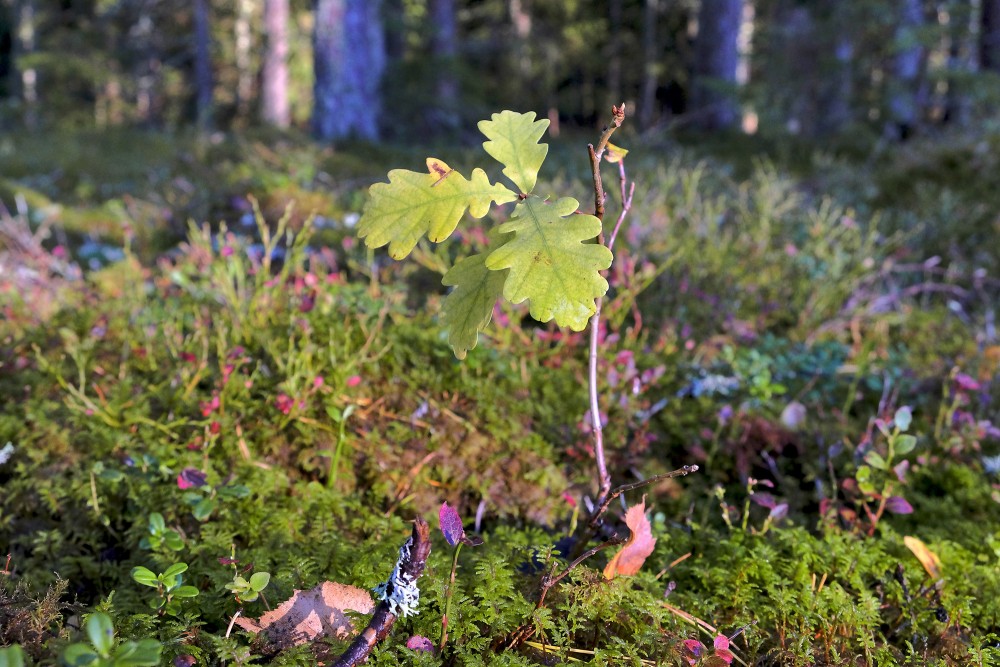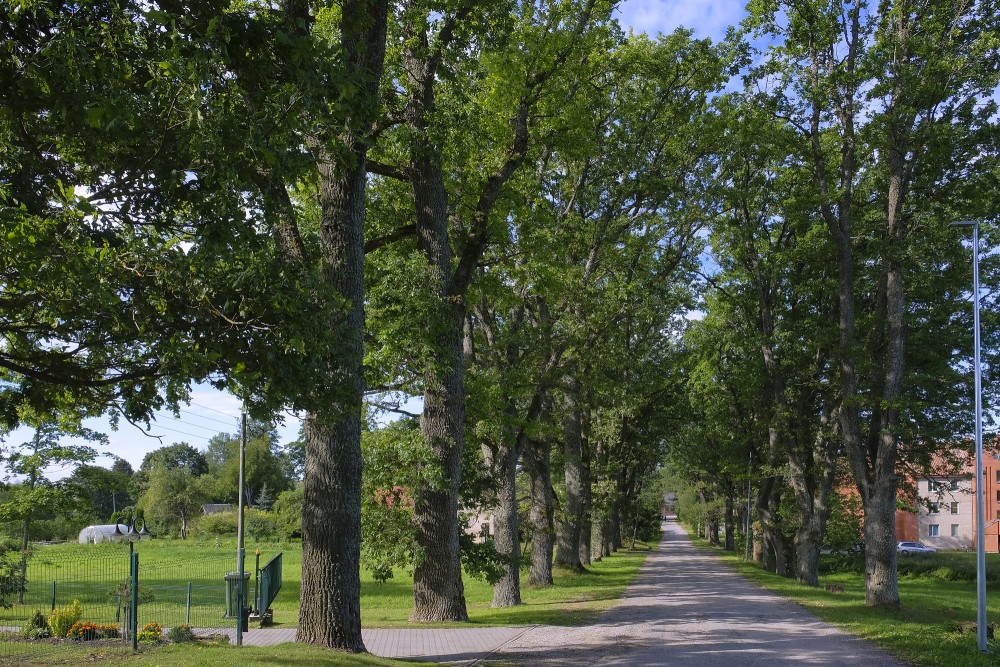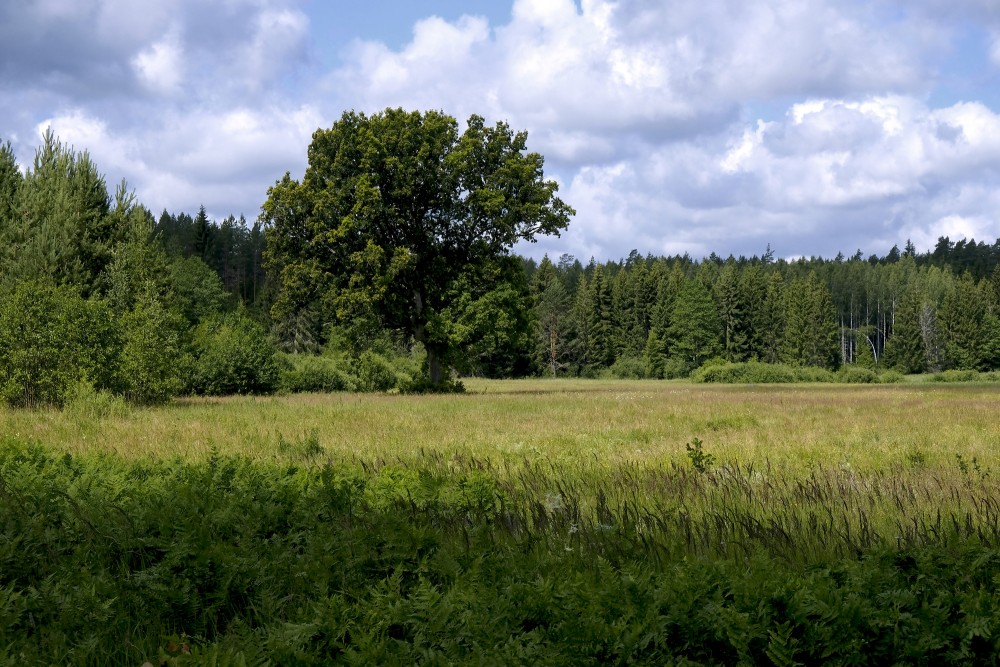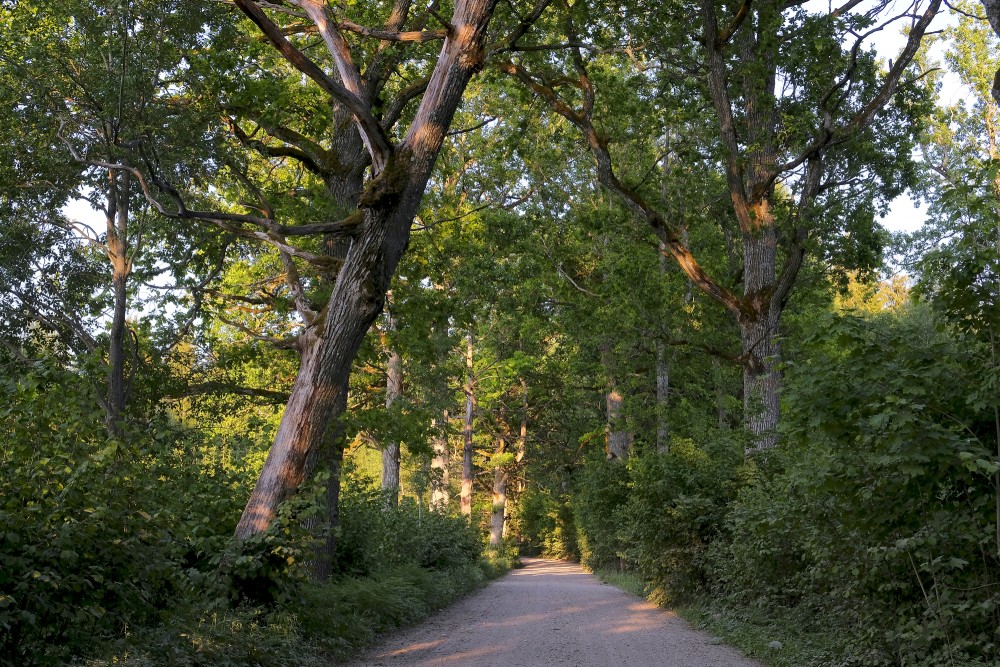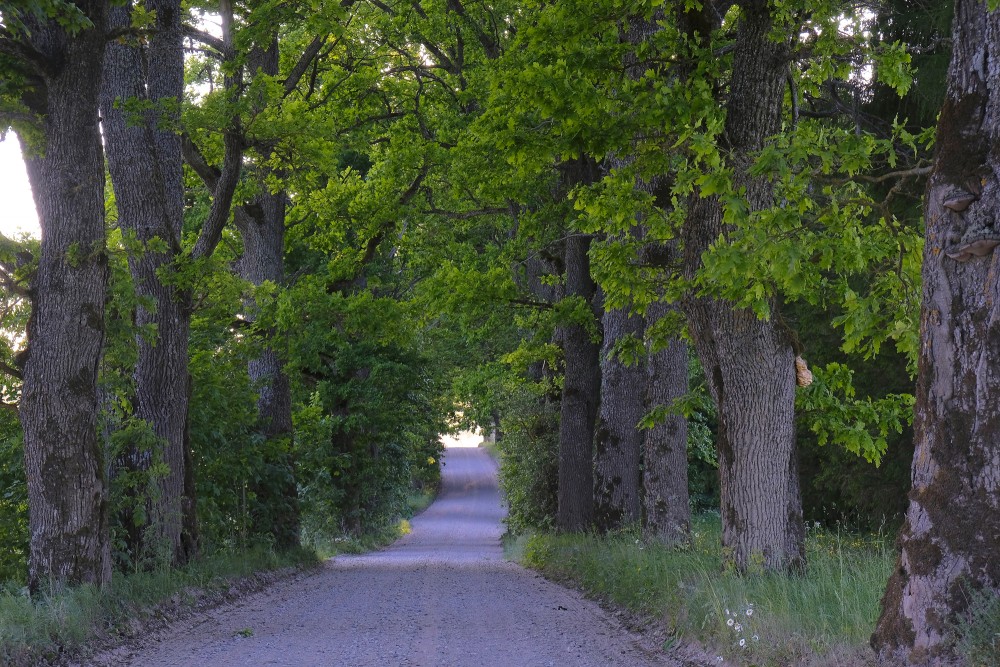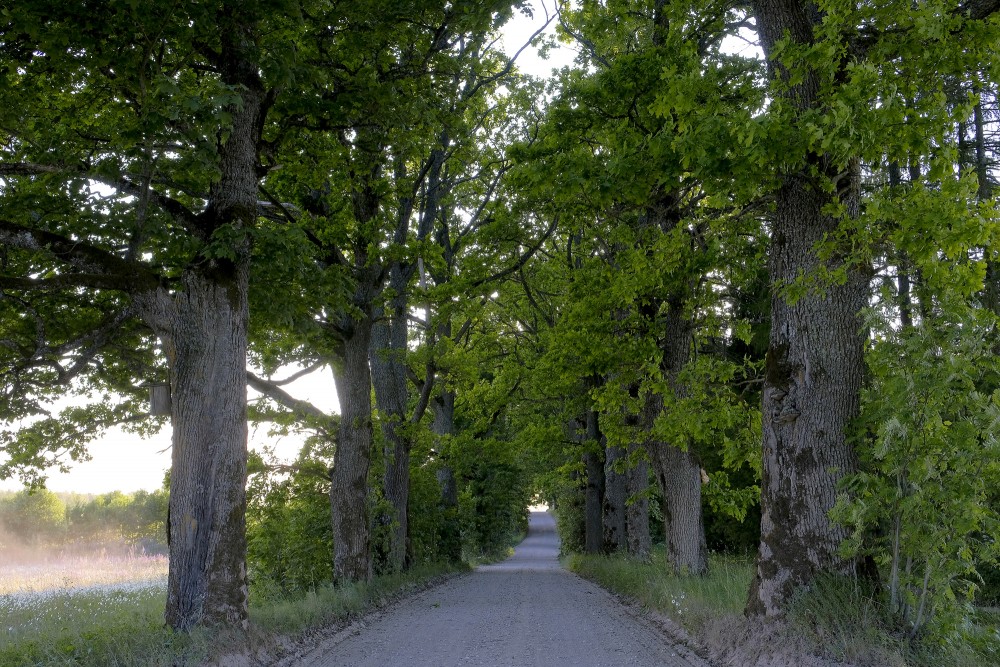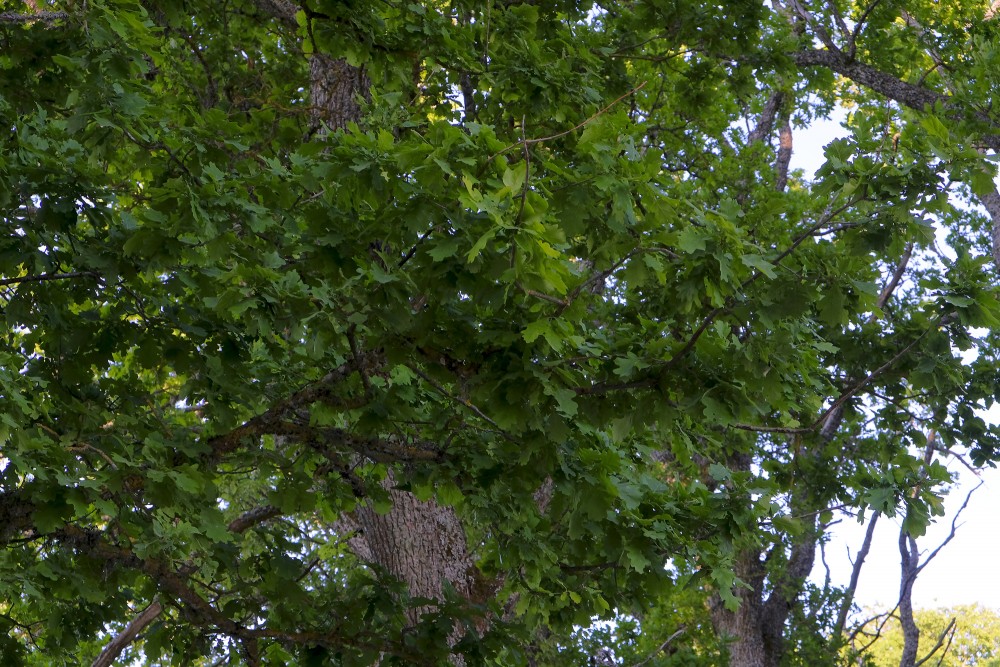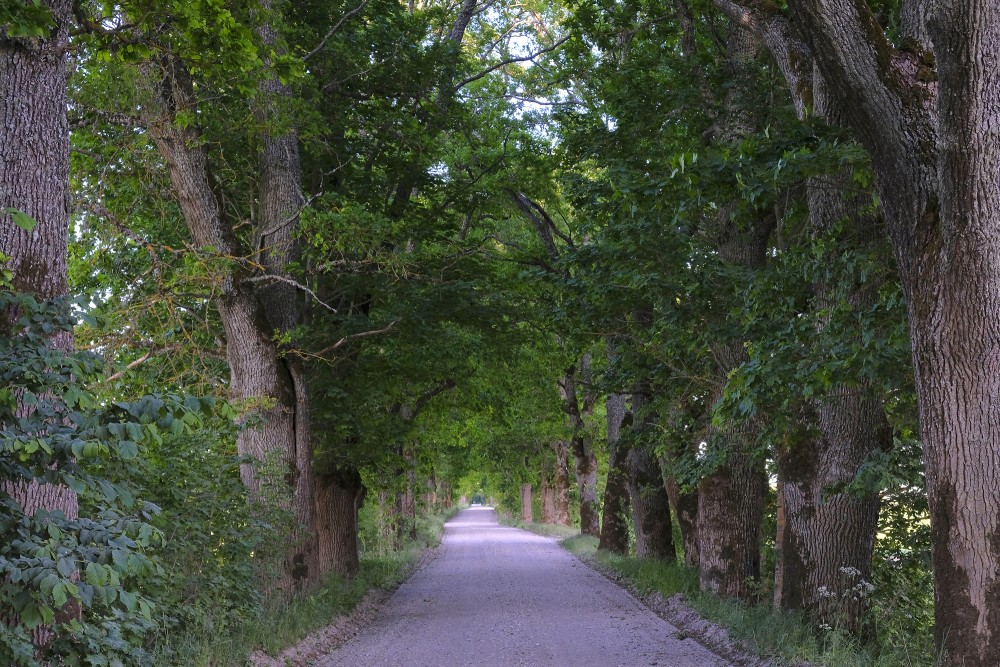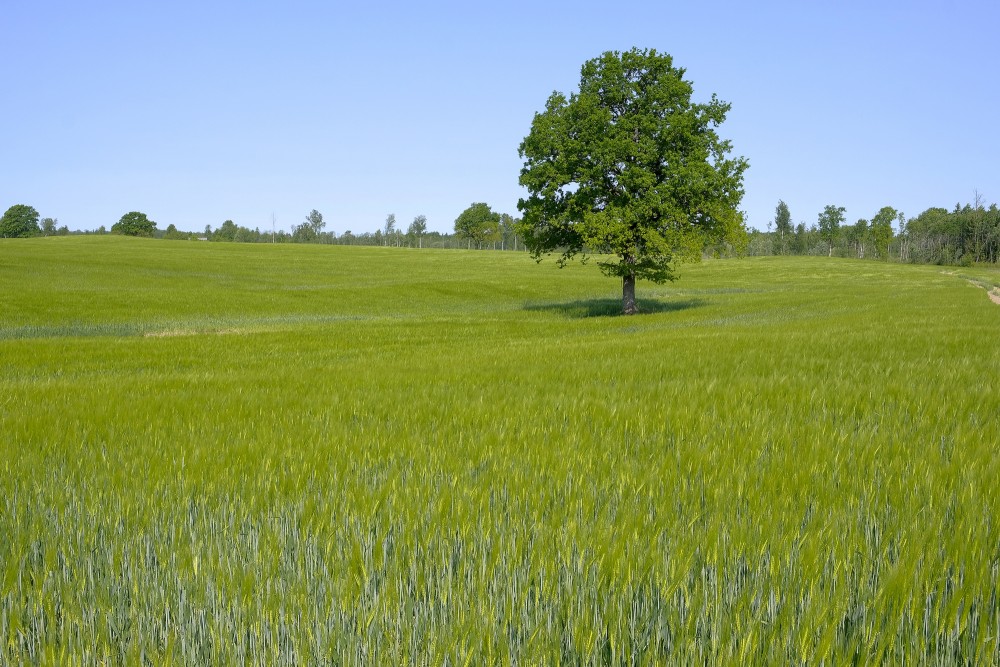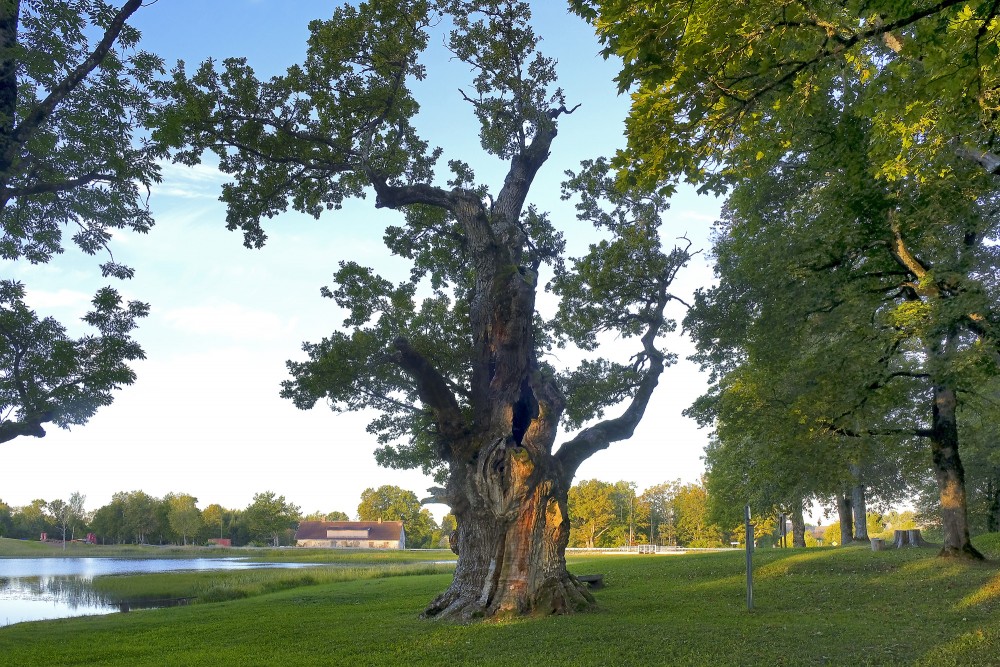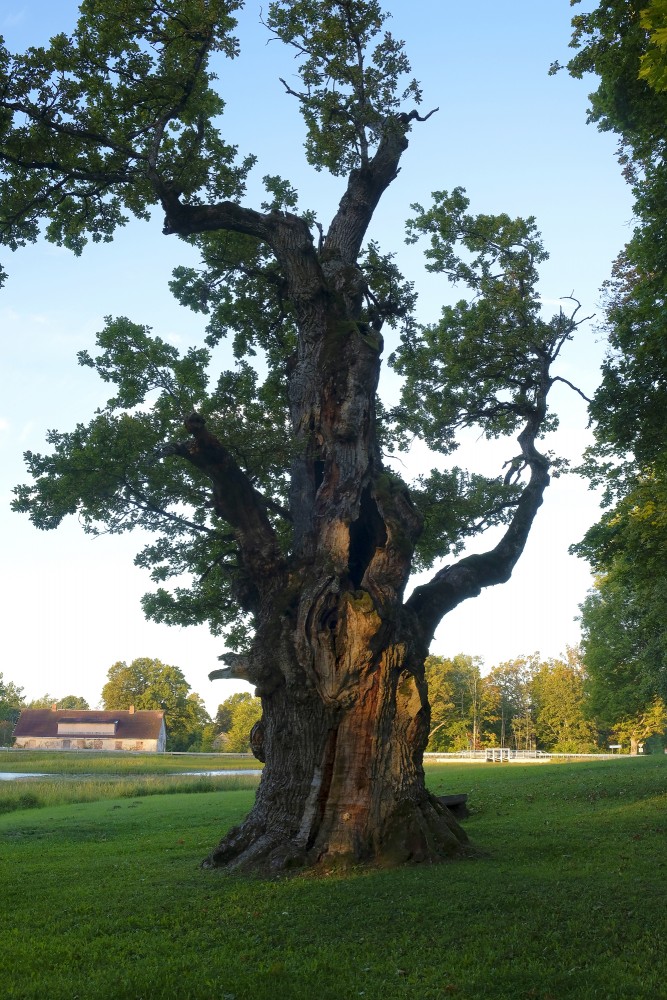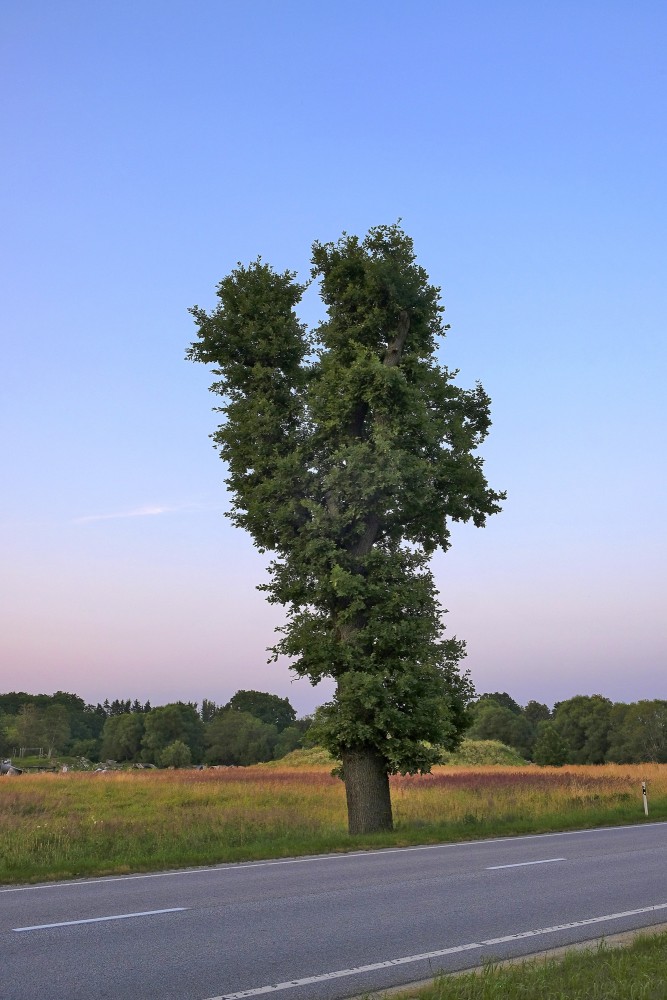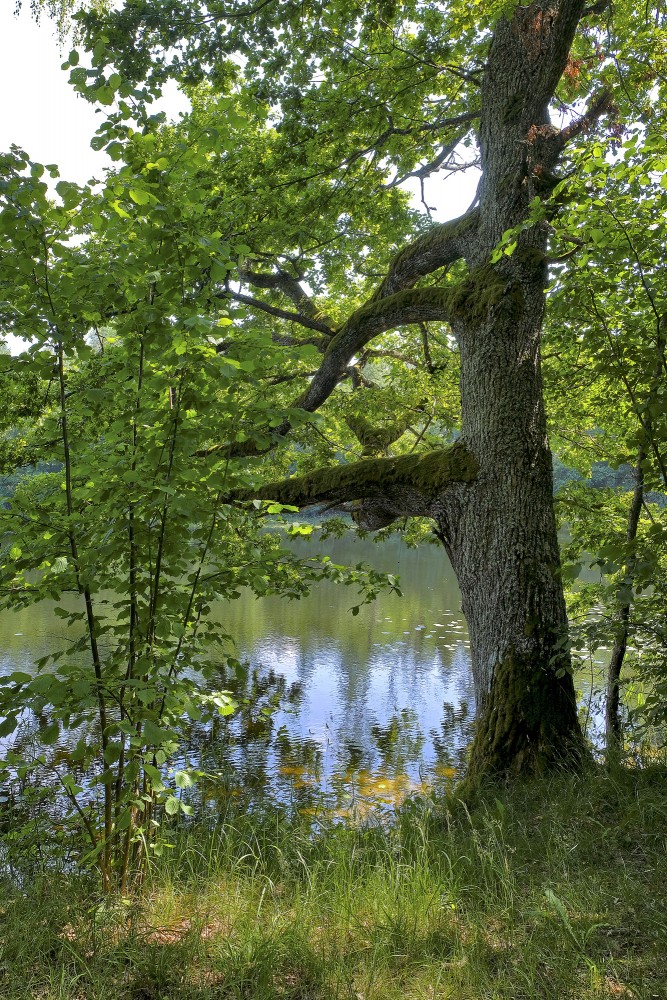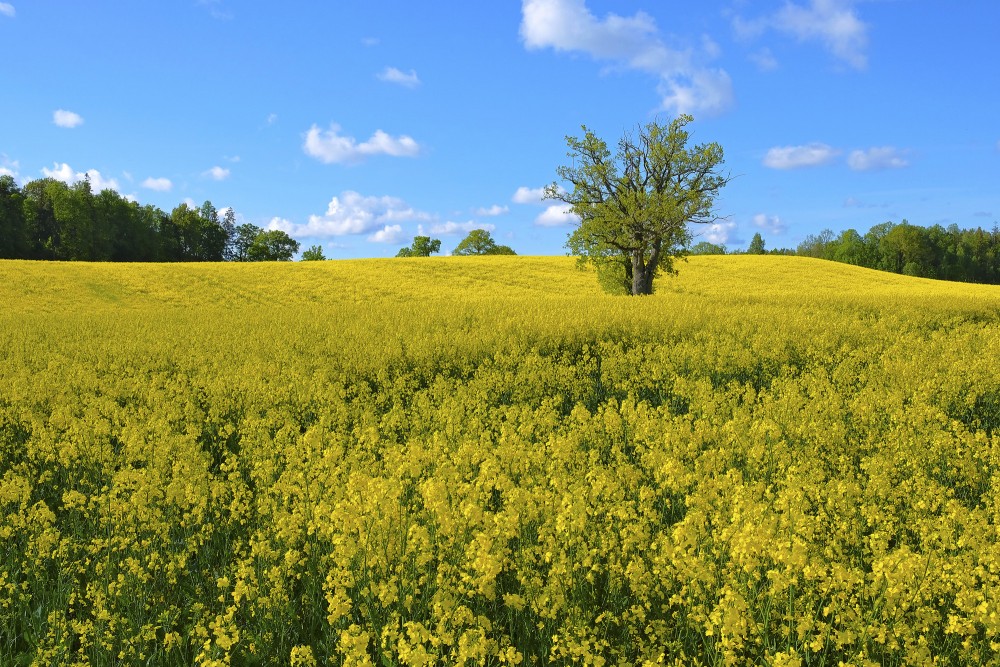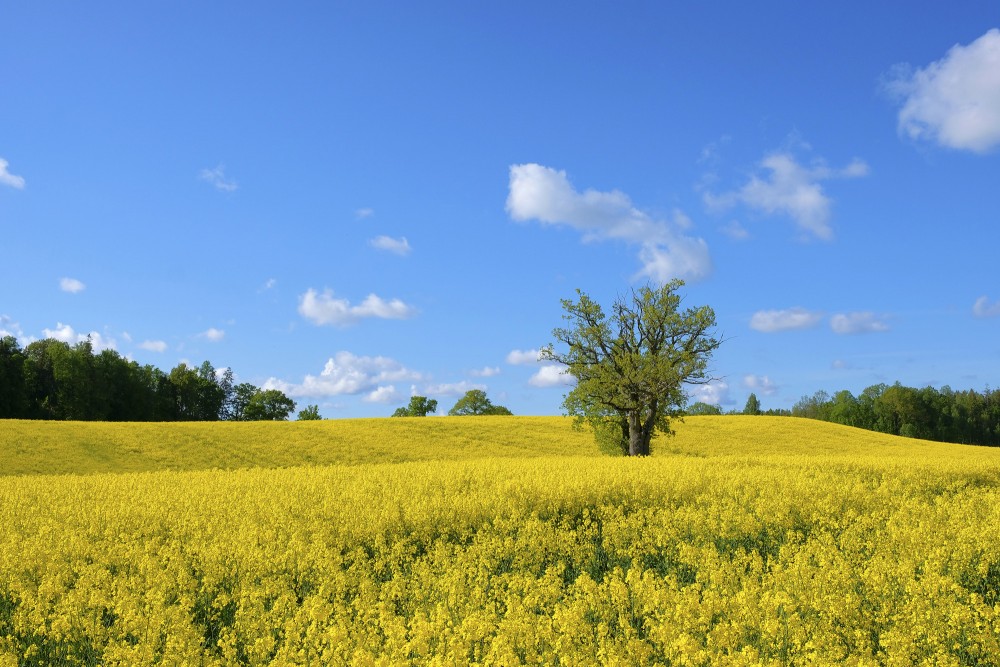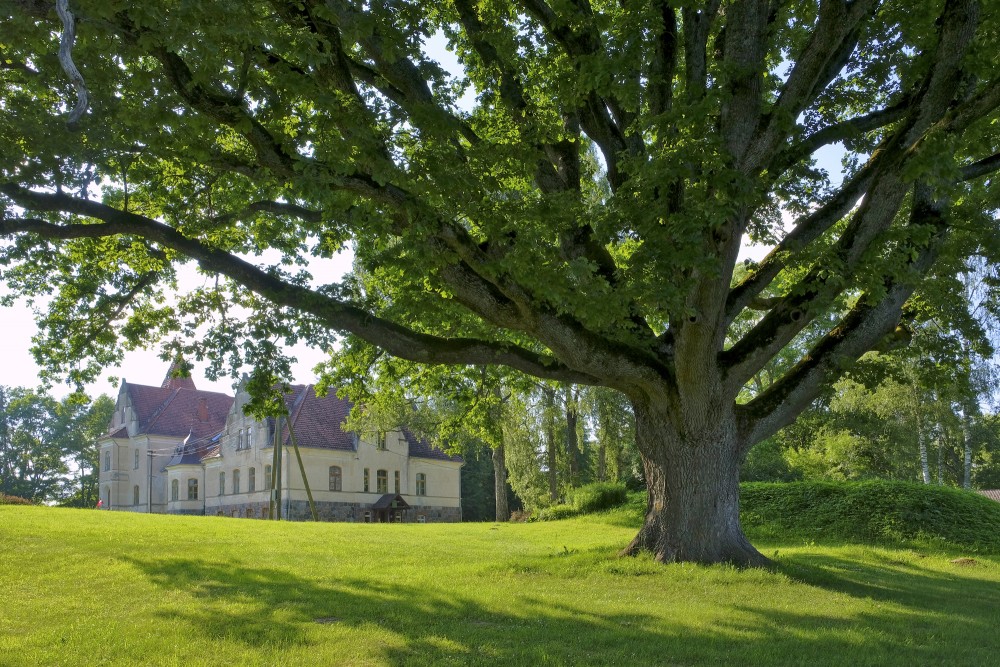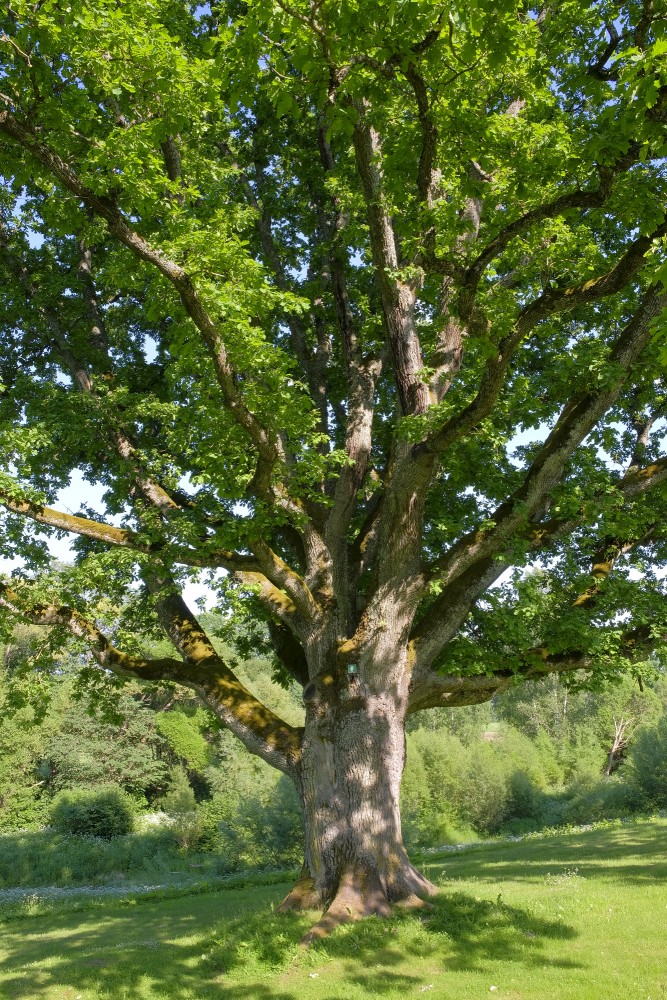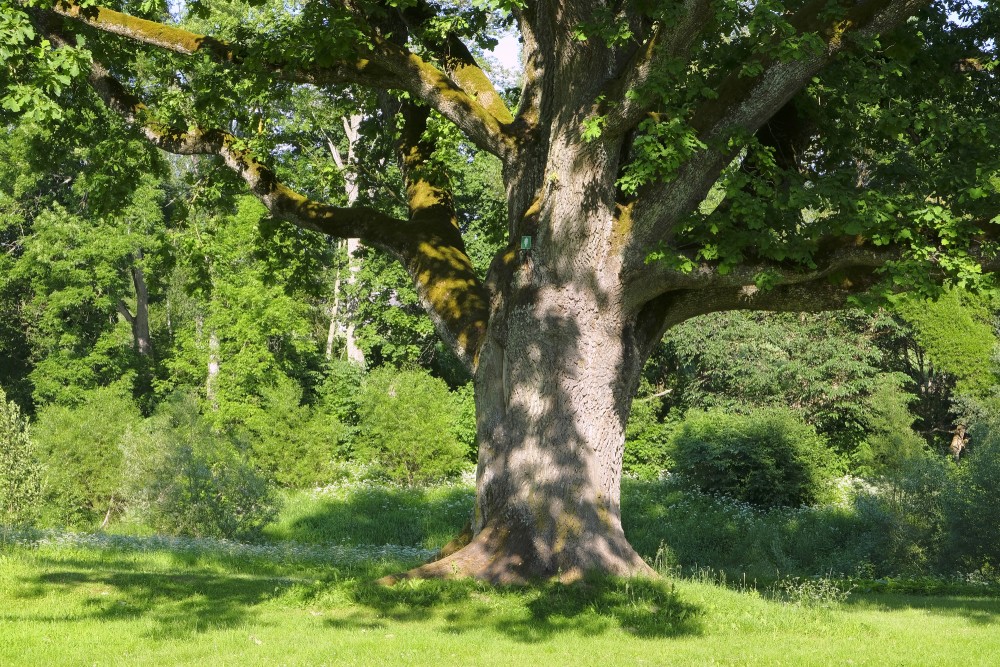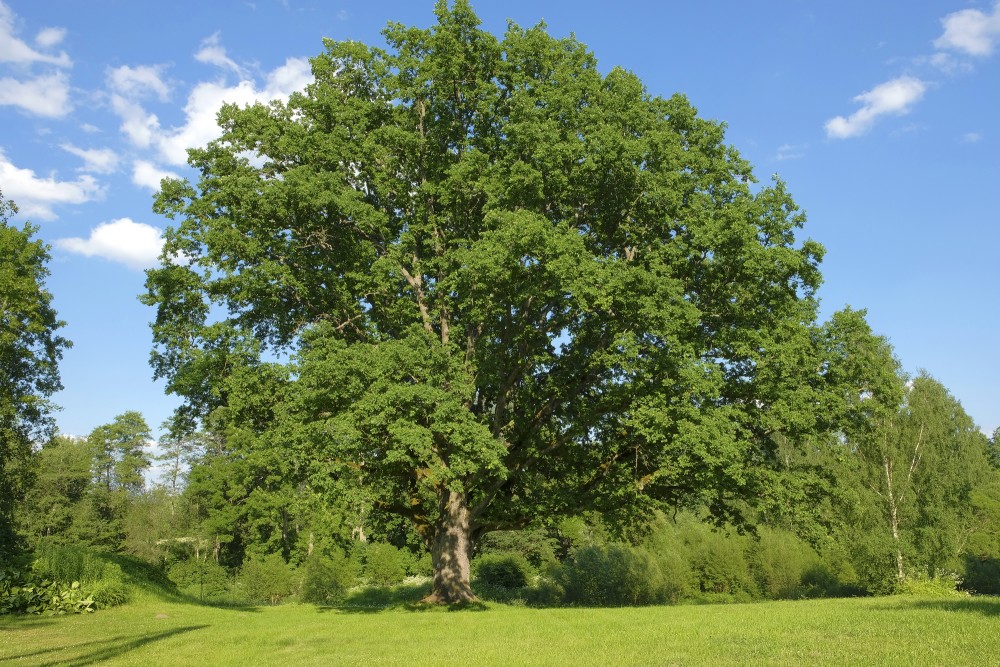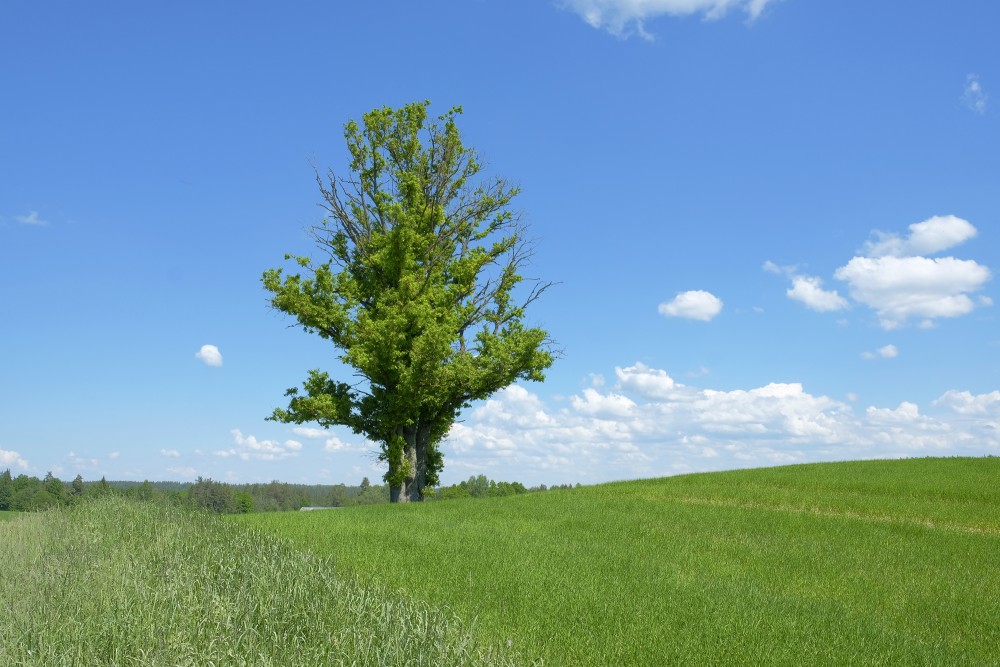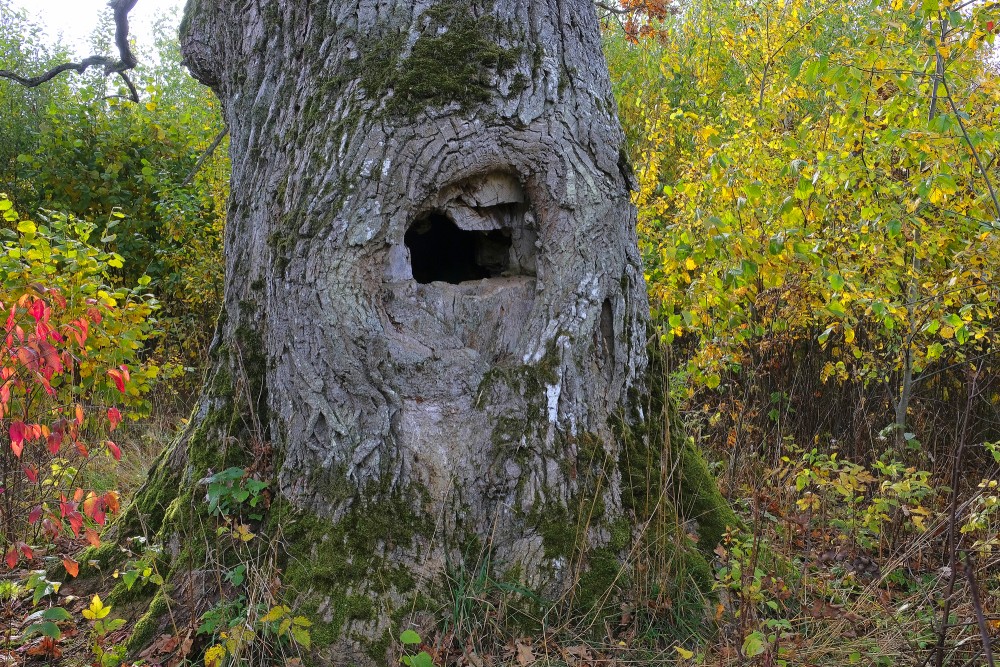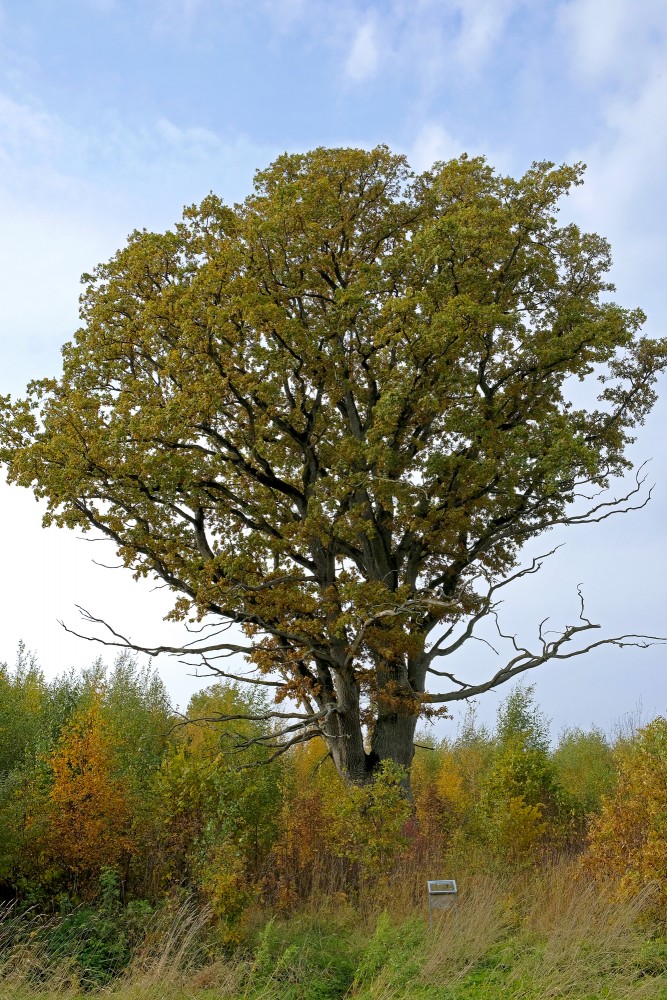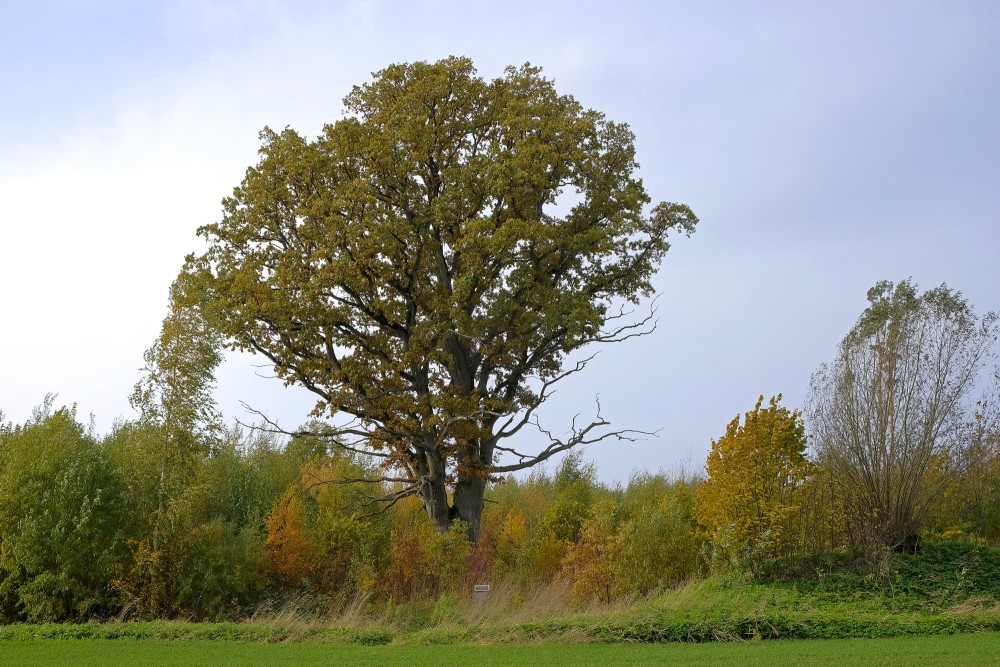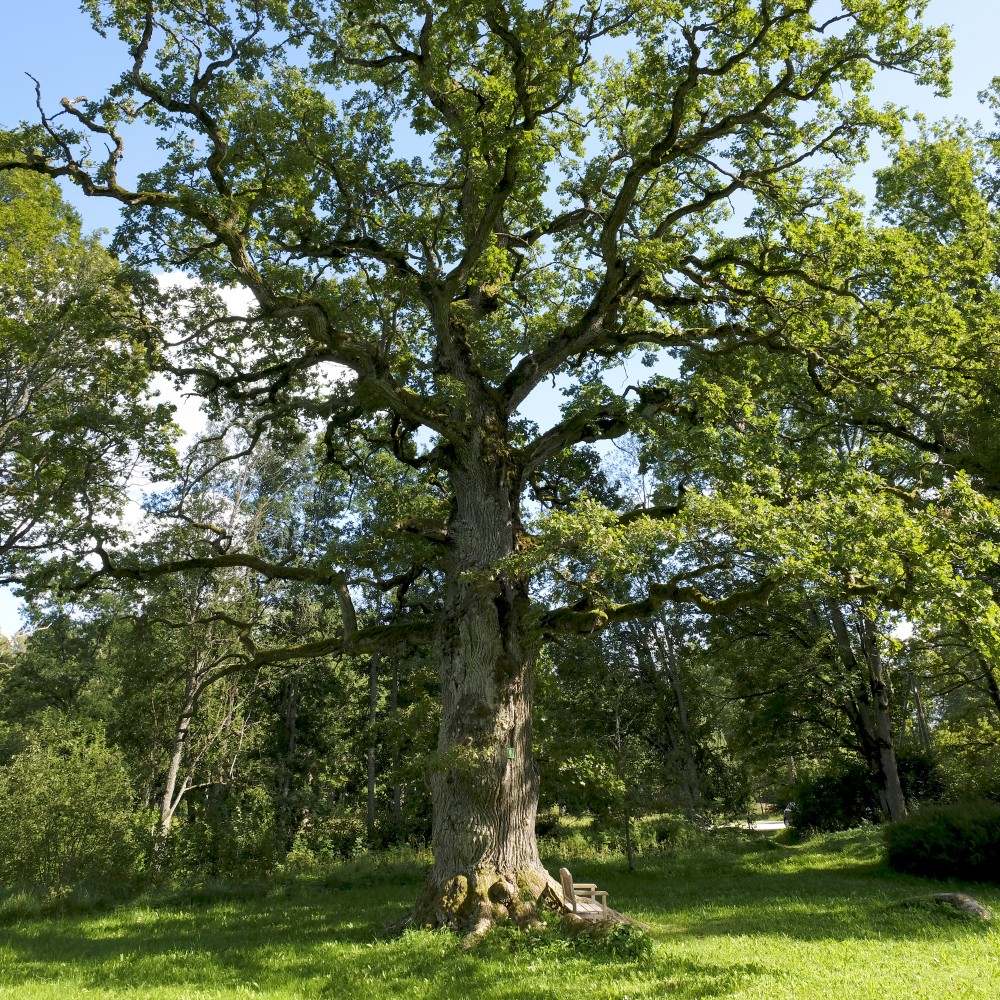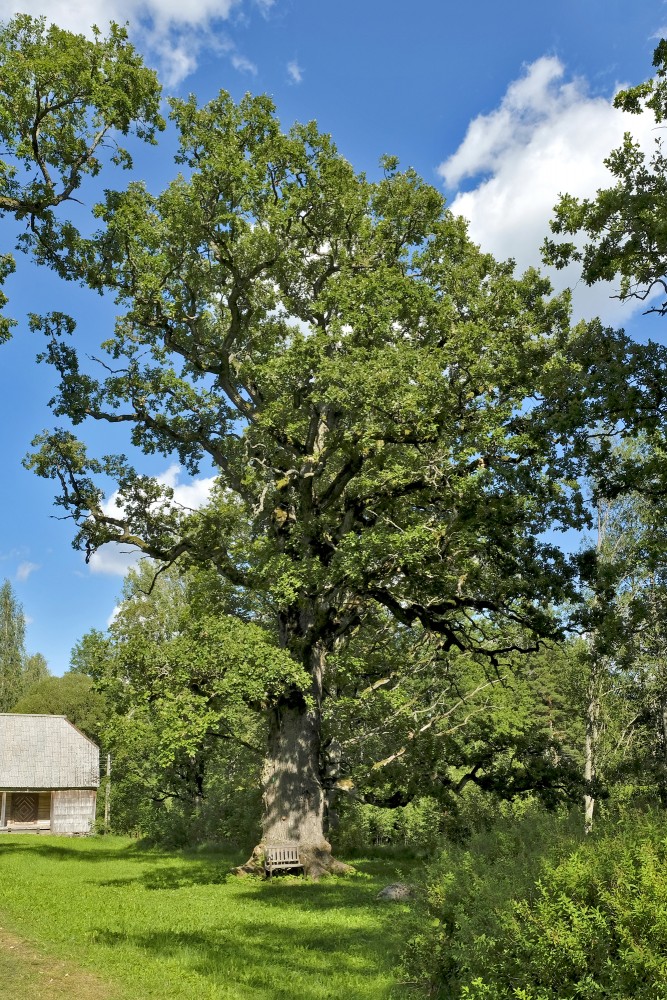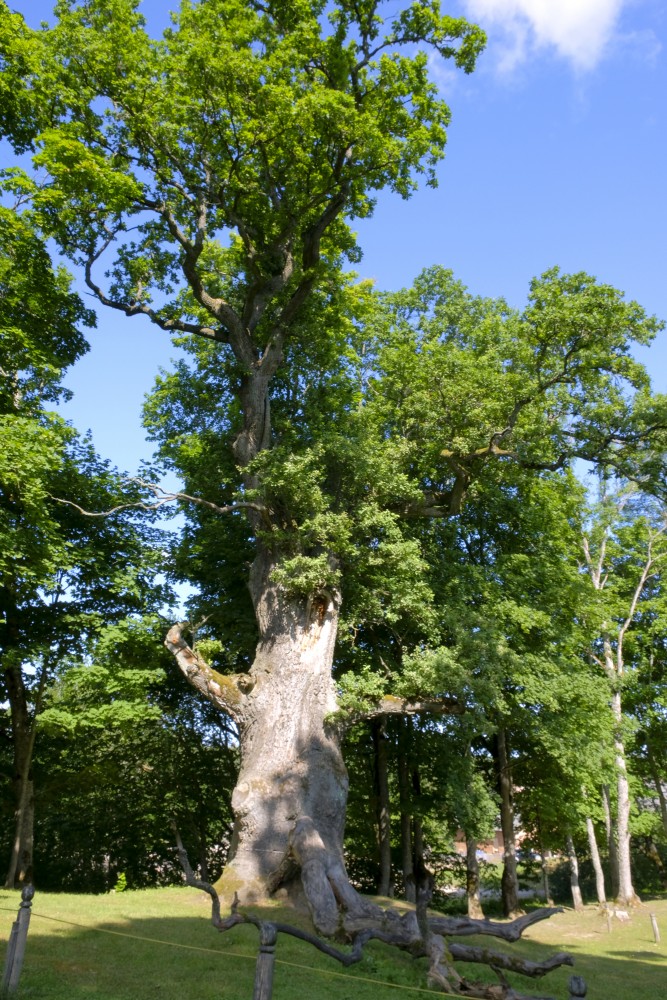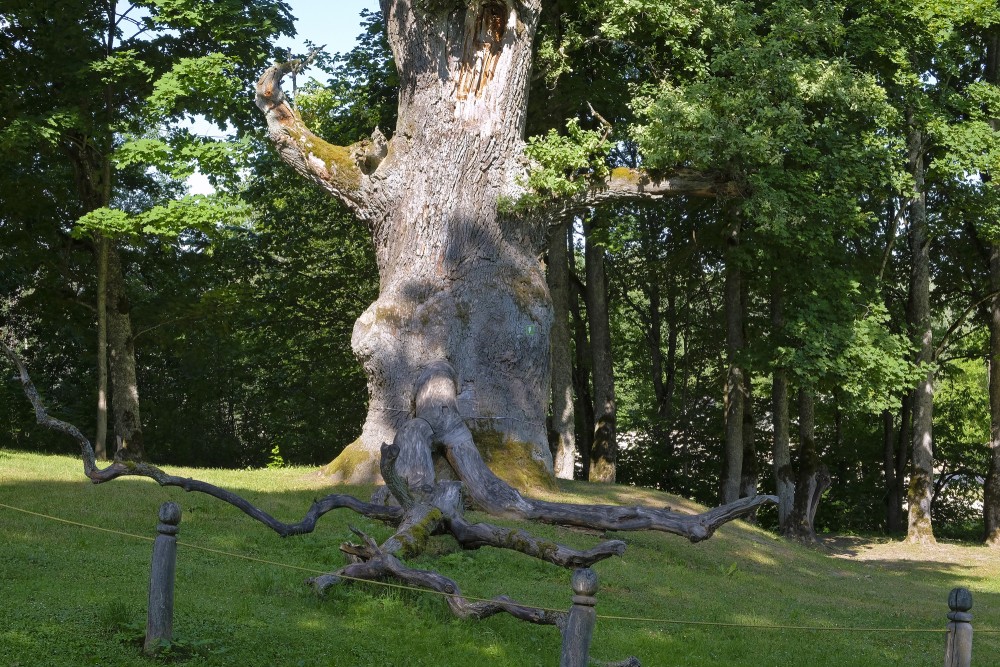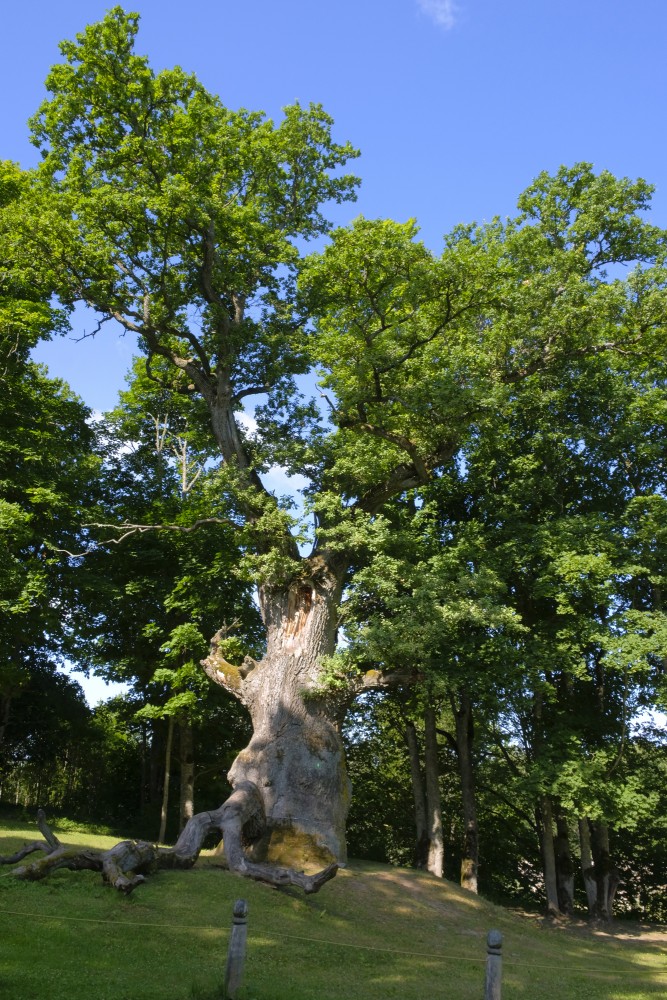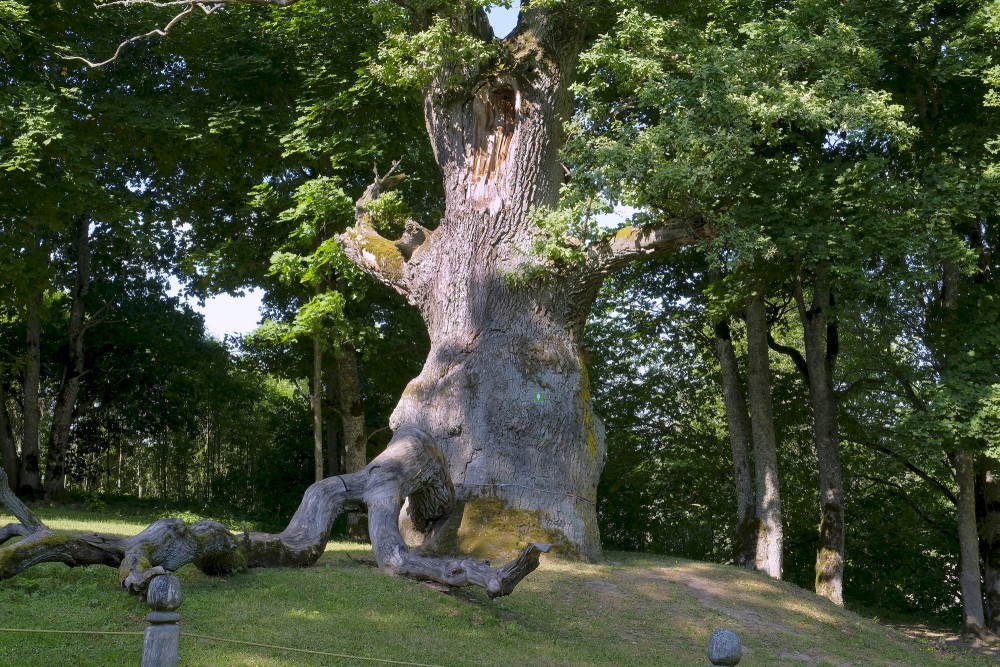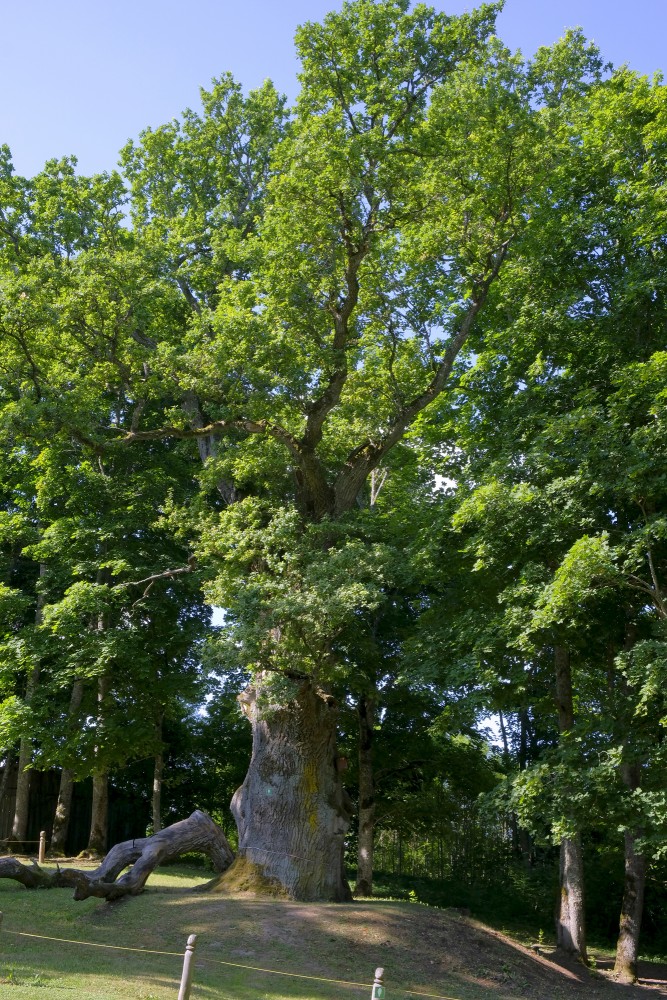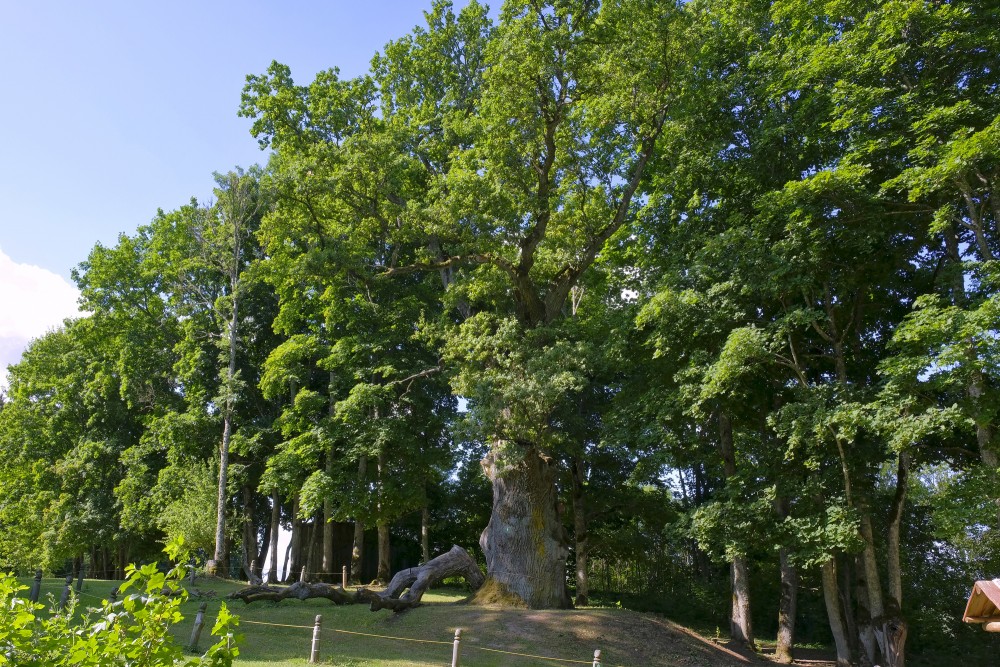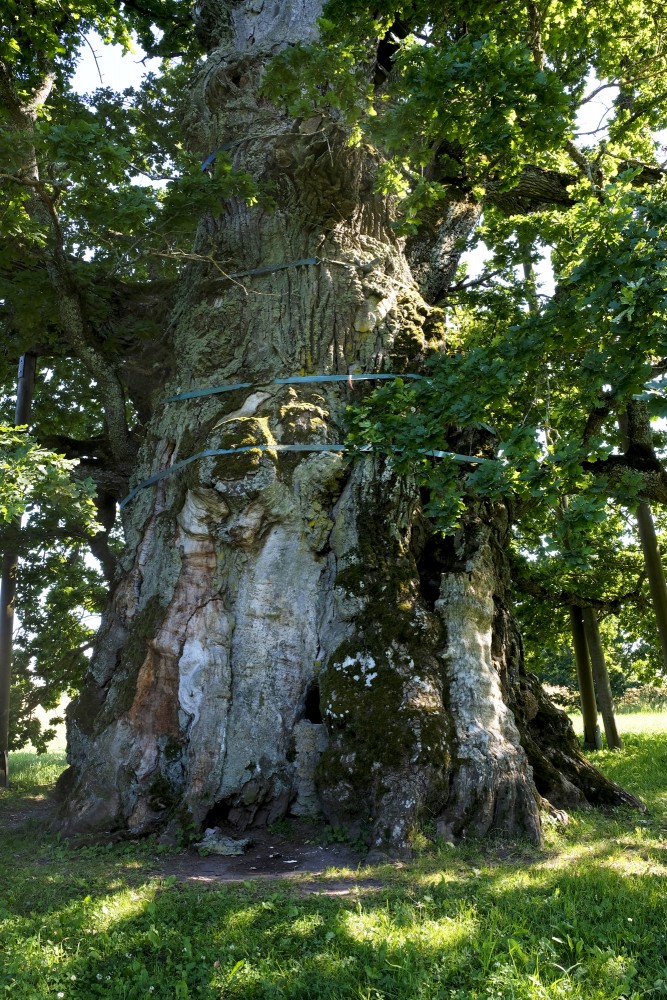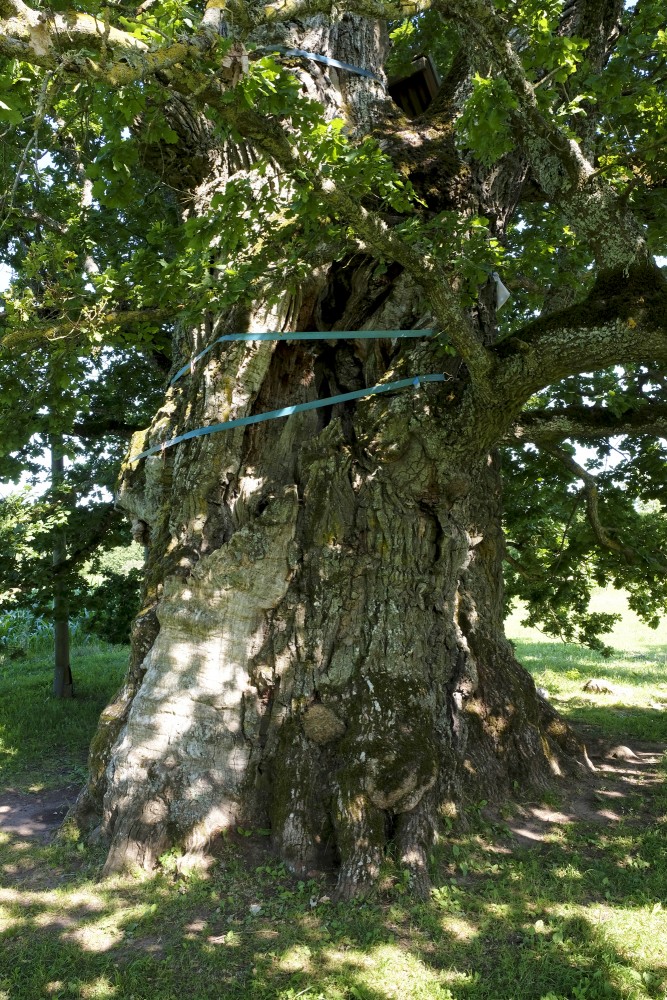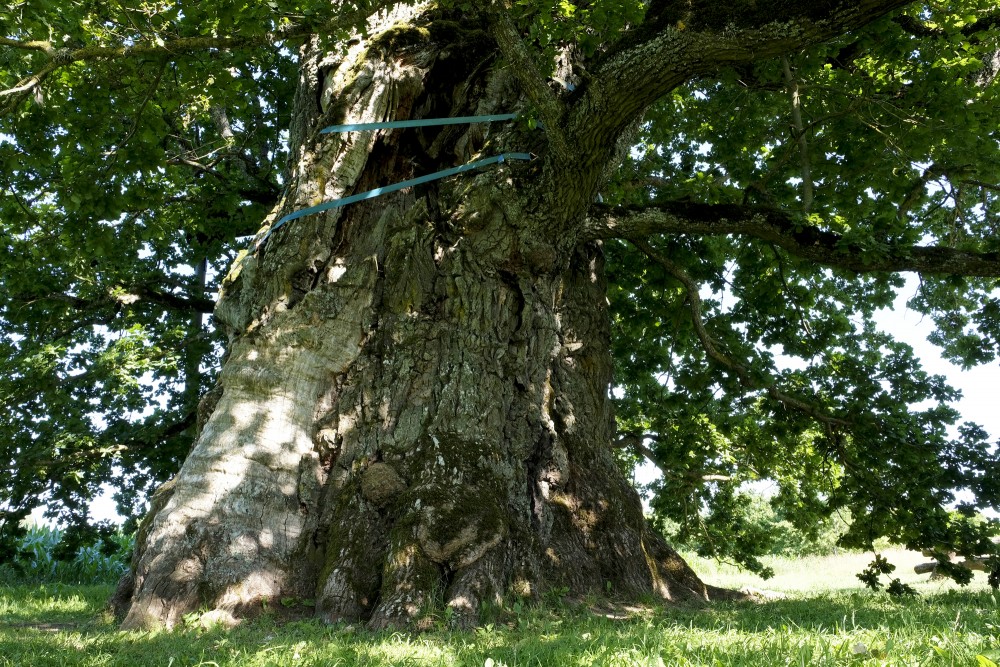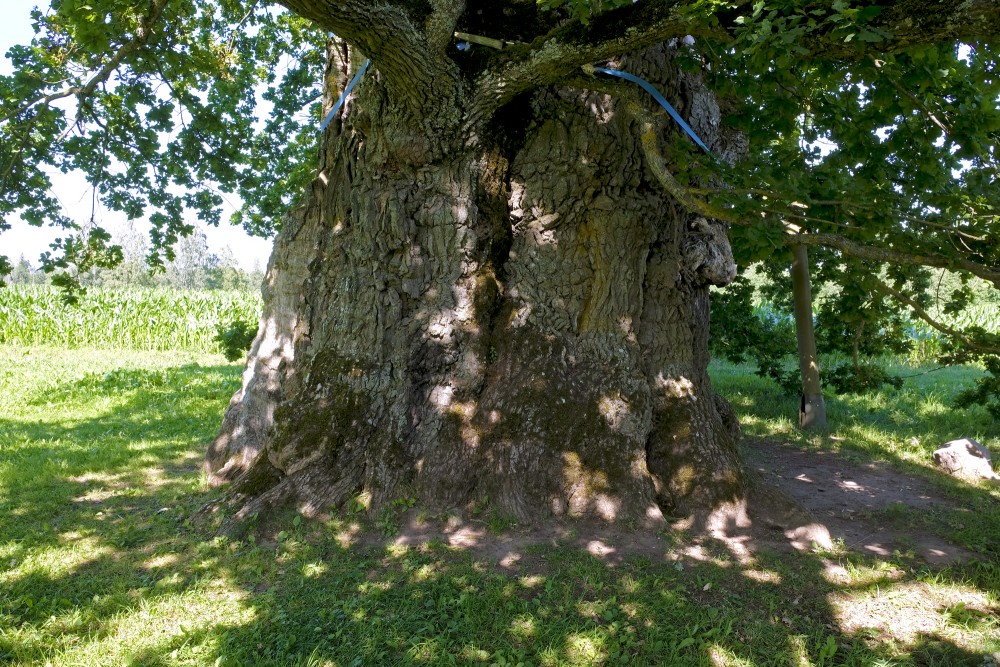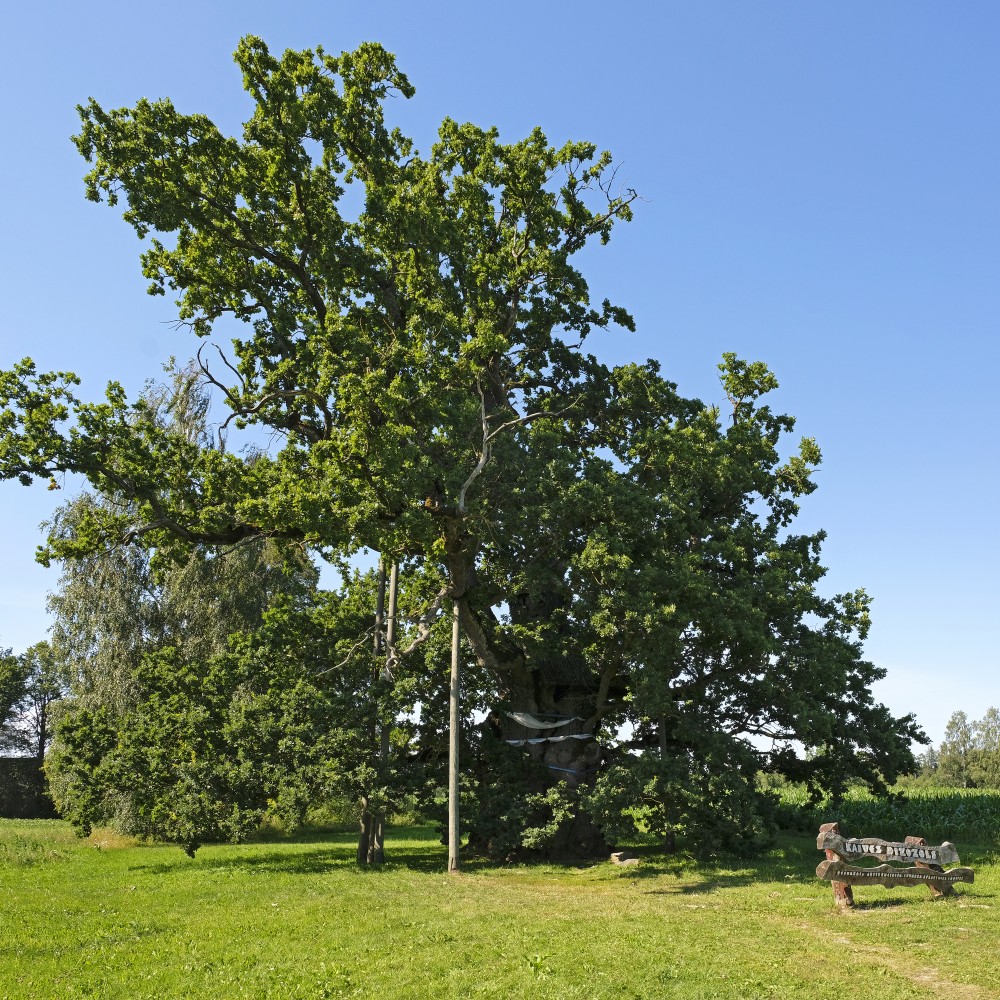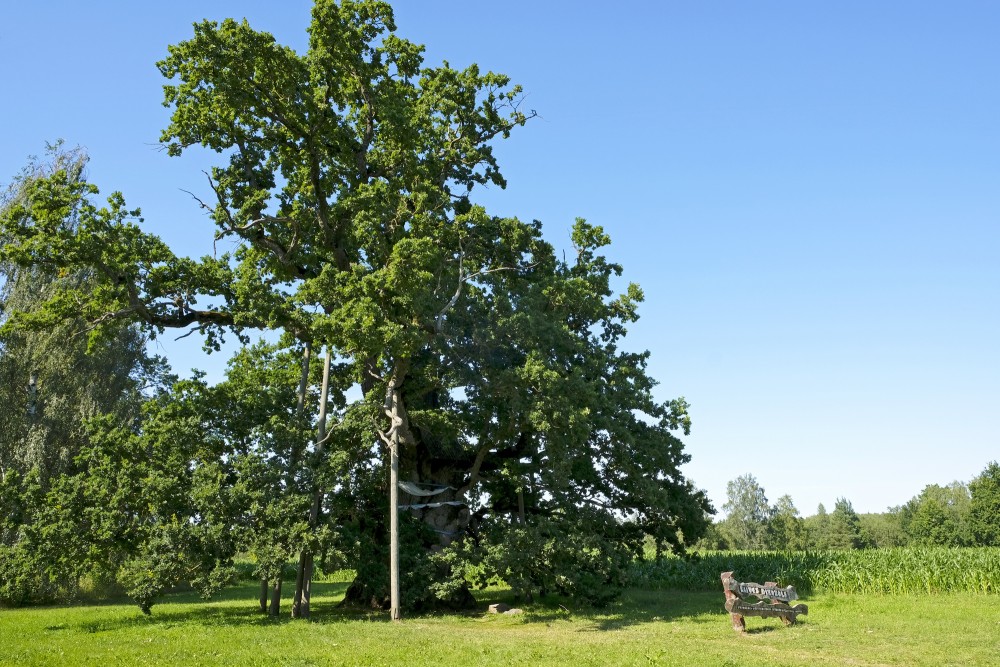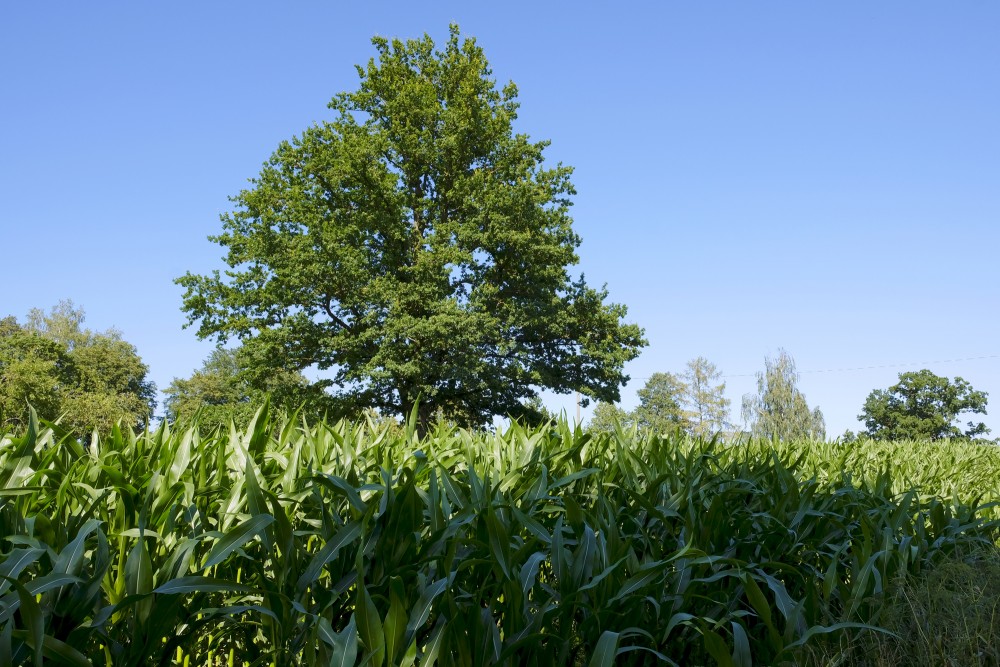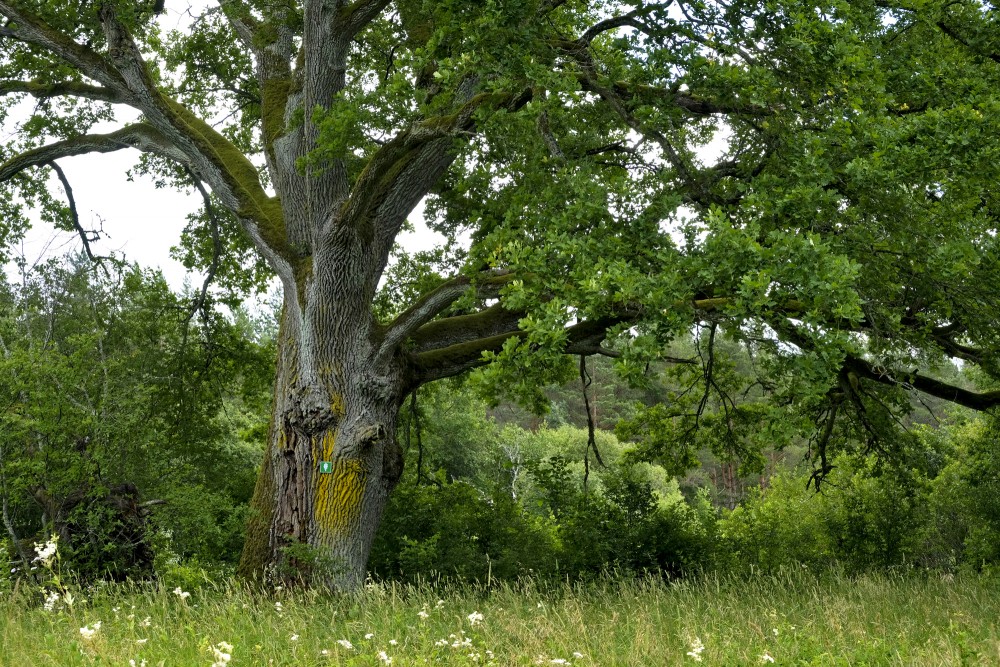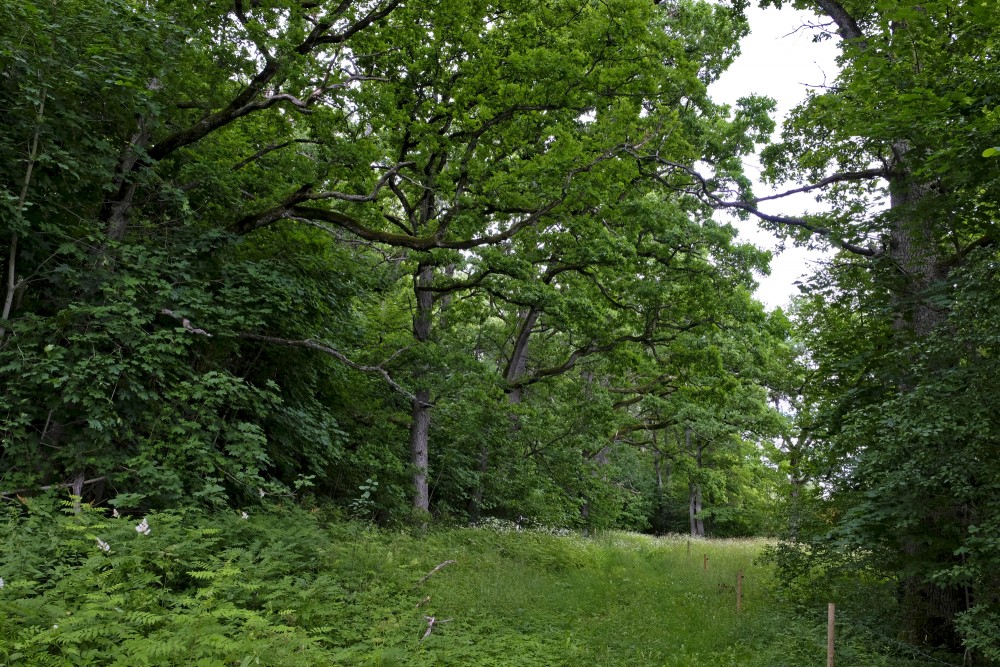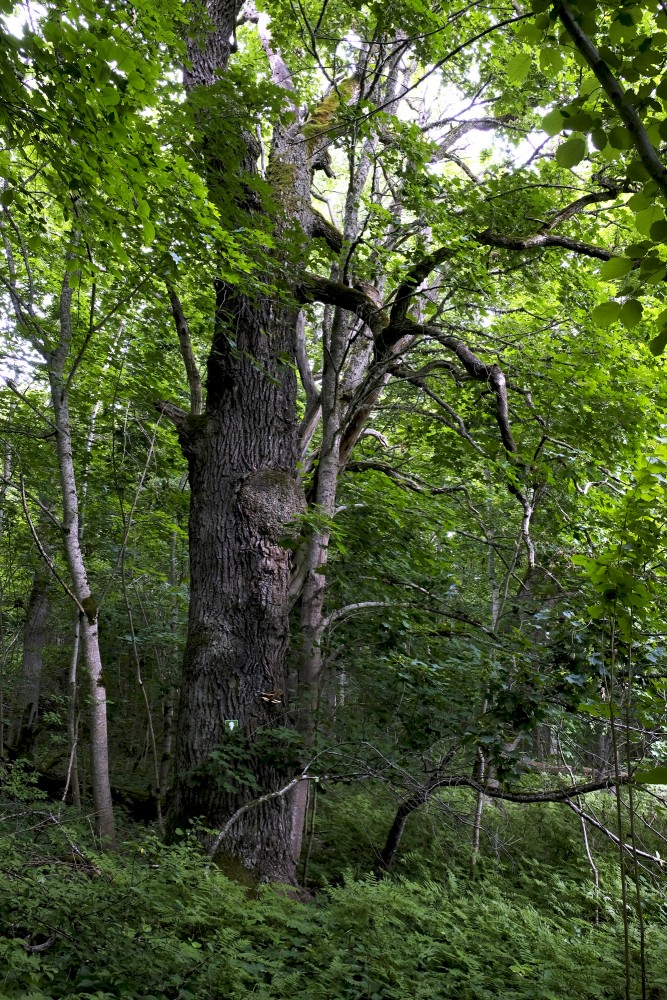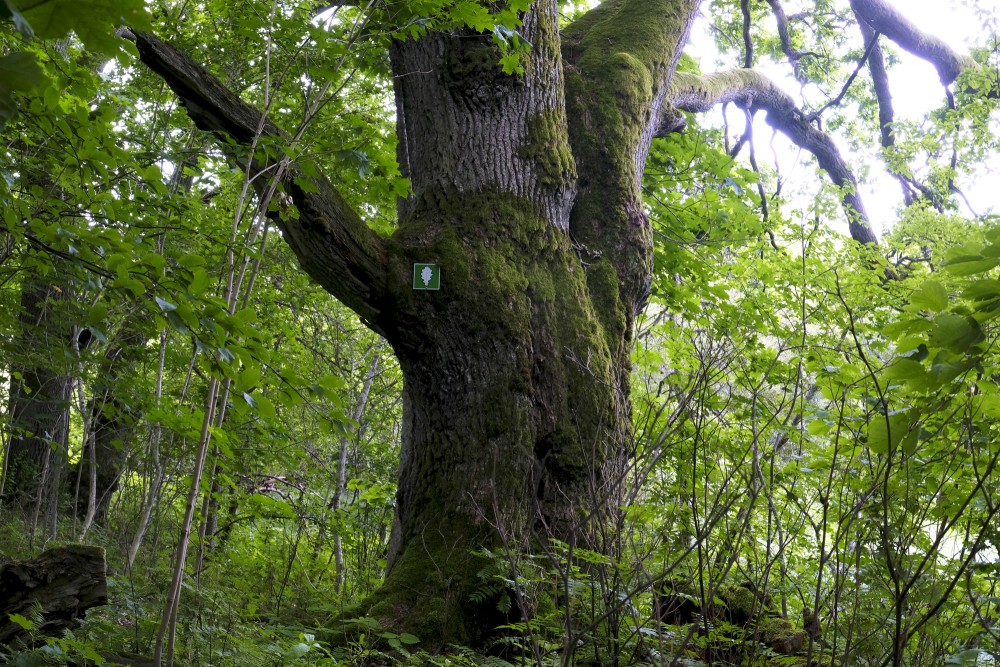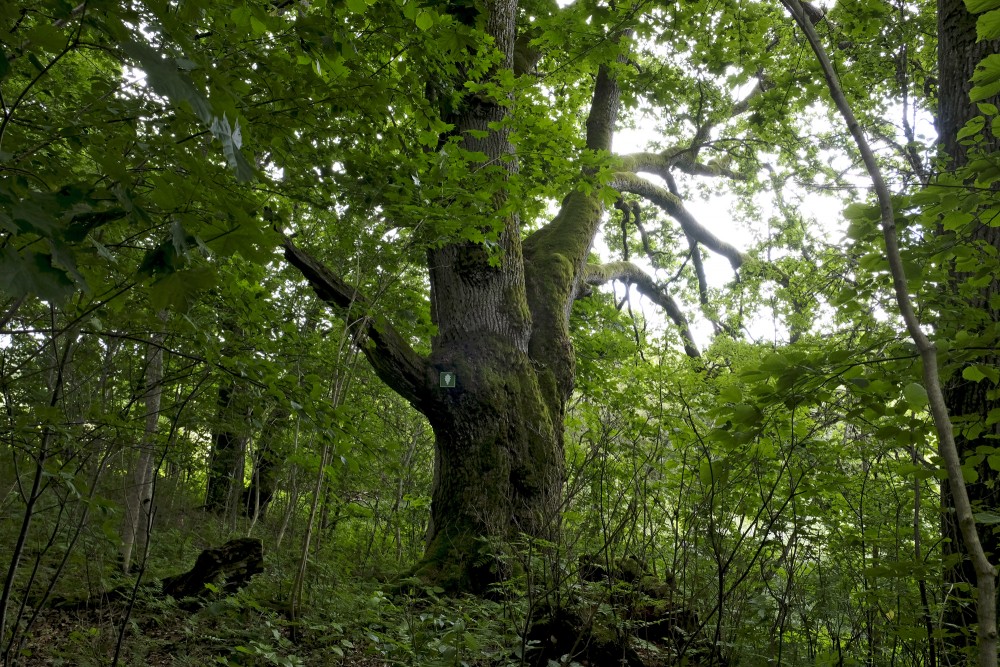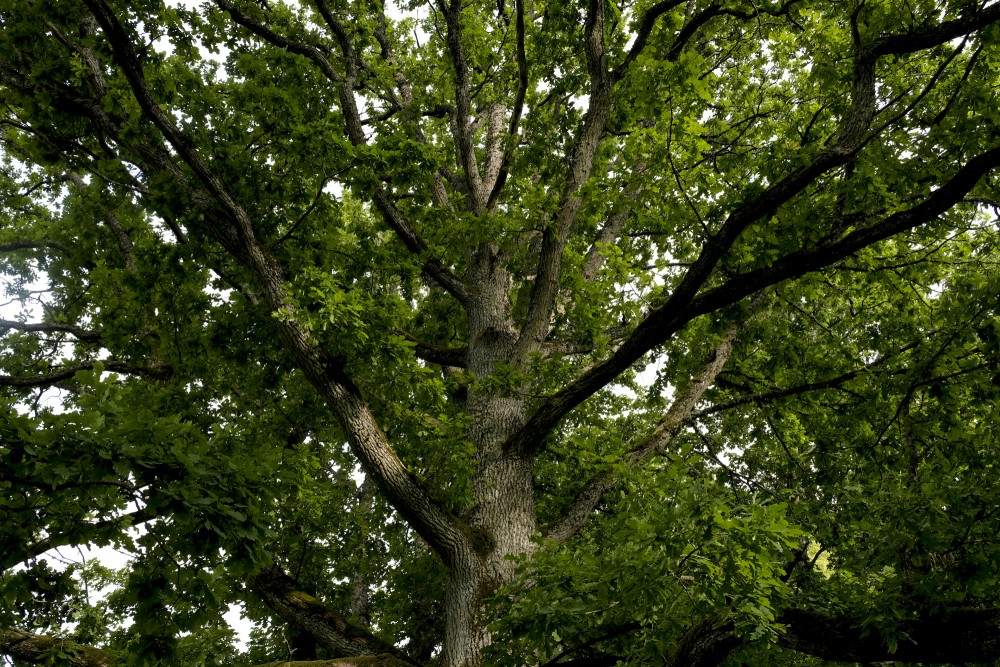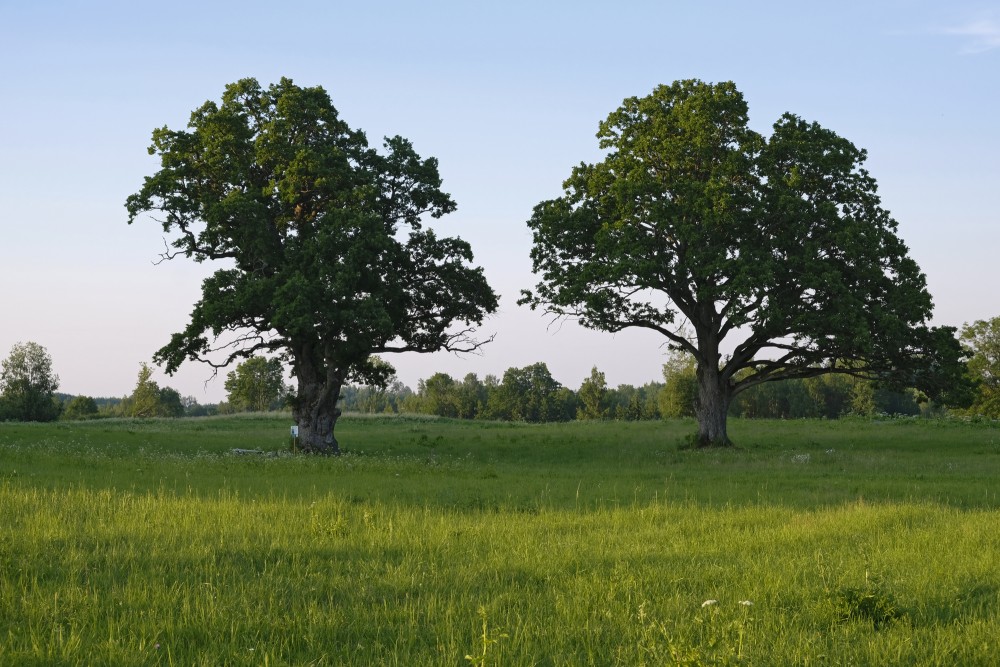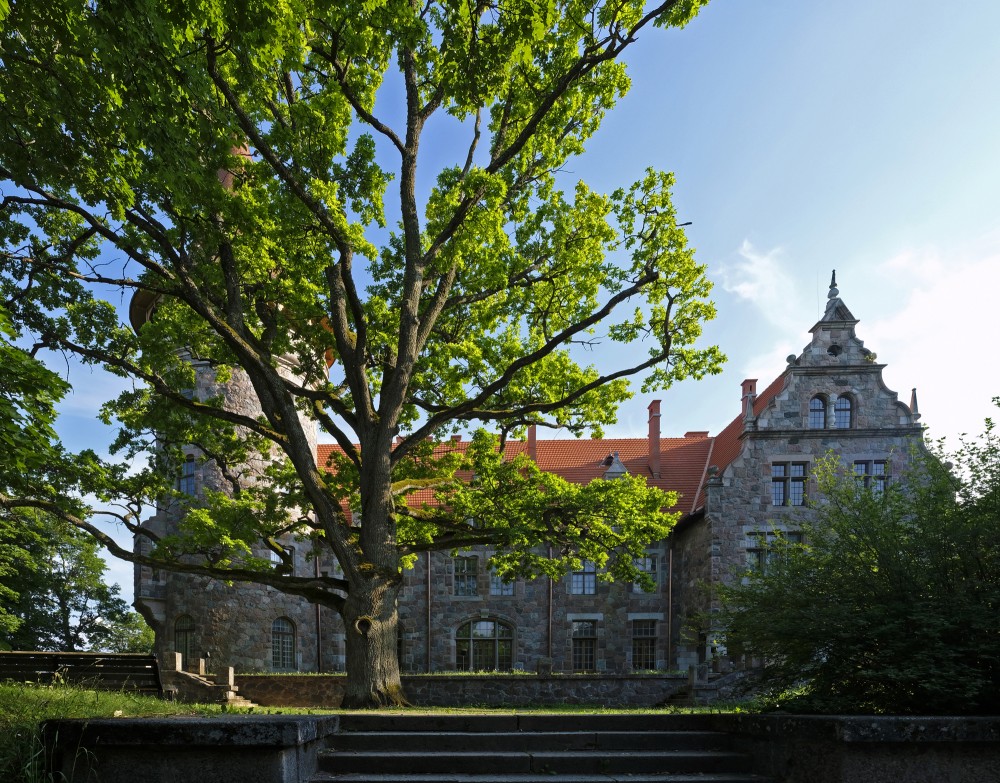Oak (Quercus)
An oak is a tree or shrub in the genus Quercus (/ˈkwɜːrkəs/; Latin "oak tree") of the beech family, Fagaceae. There are approximately 600 extant species of oaks. The common name "oak" also appears in the names of species in related genera, notably Lithocarpus (stone oaks), as well as in those of unrelated species such as Grevillea robusta (silky oaks) and the Casuarinaceae (she-oaks). The genus Quercus is native to the Northern Hemisphere, and includes deciduous and evergreen species extending from cool temperate to tropical latitudes in the Americas, Asia, Europe, and North Africa. North America contains the largest number of oak species, with approximately 90 occurring in the United States, while Mexico has 160 species of which 109 are endemic. The second greatest center of oak diversity is China, which contains approximately 100 species.
Oaks have spirally arranged leaves, with lobate margins in many species; some have serrated leaves or entire leaves with smooth margins. Many deciduous species are marcescent, not dropping dead leaves until spring. In spring, a single oak tree produces both male flowers (in the form of catkins) and small female flowers. The fruit is a nut called an acorn or oak nut borne in a cup-like structure known as a cupule; each acorn contains one seed (rarely two or three) and takes 6–18 months to mature, depending on their species. The acorns and leaves contain tannic acid, which helps to guard from fungi and insects. The live oaks are distinguished for being evergreen, but are not actually a distinct group and instead are dispersed across the genus.
Scientific classification
Kingdom: Plantae
Clade: Angiosperms
Clade: Eudicots
Clade: Rosids
Order: Fagales
Family: Fagaceae
Genus: Quercus
Hybridization
Interspecific hybridization is quite common among oaks but usually between species within the same section only and most common in the white oak group (subgenus Quercus, section Quercus; see List of Quercus species). Inter-section hybrids, except between species of sections Quercus and Mesobalanus, are unknown. Recent systematic studies appear to confirm a high tendency of Quercus species to hybridize because of a combination of factors. White oaks are unable to discriminate against pollination by other species in the same section. Because they are wind pollinated and they have weak internal barriers to hybridization, hybridization produces functional seeds and fertile hybrid offspring. Ecological stresses, especially near habitat margins, can also cause a breakdown of mate recognition as well as a reduction of male function (pollen quantity and quality) in one parent species.
Frequent hybridization among oaks has consequences for oak populations around the world; most notably, hybridization has produced large populations of hybrids with copious amounts of introgression, and the evolution of new species. Frequent hybridization and high levels of introgression have caused different species in the same populations to share up to 50% of their genetic information. Having high rates of hybridization and introgression produces genetic data that often does not differentiate between two clearly morphologically distinct species, but instead differentiates populations. Numerous hypotheses have been proposed to explain how oak species are able to remain morphologically and ecologically distinct with such high levels of gene flow, but the phenomenon is still largely a mystery to botanists.
The Fagaceae, or beech family, to which the oaks belong, is a very slow evolving clade compared to other angiosperms, and the patterns of hybridization and introgression in Quercus pose a great challenge to the concept of a species since a species is often defined as a group of “actually or potentially interbreeding populations which are reproductively isolated from other such groups.” By this definition, many species of Quercus would be lumped together according to their geographic and ecological habitat, despite clear distinctions in morphology and, to a large extent, genetic data.
Uses
Oak wood has a density of about 0.75 g/cm3 (0.43 oz/cu in) creating great strength and hardness. The wood is very resistant to insect and fungal attack because of its high tannin content. It also has very appealing grain markings, particularly when quartersawn. Oak planking was common on high status Viking longships in the 9th and 10th centuries. The wood was hewn from green logs, by axe and wedge, to produce radial planks, similar to quarter-sawn timber. Wide, quarter-sawn boards of oak have been prized since the Middle Ages for use in interior panelling of prestigious buildings such as the debating chamber of the House of Commons in London and in the construction of fine furniture. Oak wood, from Quercus robur and Quercus petraea, was used in Europe for the construction of ships, especially naval men of war, until the 19th century, and was the principal timber used in the construction of European timber-framed buildings. Today oak wood is still commonly used for furniture making and flooring, timber frame buildings, and veneer production.
Barrels in which wines, sherry, and spirits such as brandy, Irish whiskey, Scotch whisky and Bourbon whiskey are aged are made from European and American oak, with single barrel whiskey fetching a premium. The use of oak in wine can add many different dimensions to wine based on the type and style of the oak. Oak barrels, which may be charred before use, contribute to the colour, taste, and aroma of the contents, imparting a desirable oaky vanillin flavour to these drinks. The great dilemma for wine producers is to choose between French and American oakwoods. French oaks (Quercus robur, Q. petraea) give the wine greater refinement and are chosen for the best wines since they increase the price compared to those aged in American oak wood. American oak contributes greater texture and resistance to ageing, but produces more powerful wine bouquets. Oak wood chips are used for smoking fish, meat, cheeses, and other foods.
Japanese oak is used in the making of professional drums from the manufacturer Yamaha Drums. The higher density of oak gives the drum a brighter and louder tone compared to traditional drum materials such as maple and birch. In hill states of India, besides fuelwood and timber, the local people use oak wood for making agricultural implements. The leaves are used as fodder during lean period and bedding for livestock.
The bark of the cork oak is used to produce wine stoppers (corks). This species grows in the Mediterranean Sea region, with Portugal, Spain, Algeria, and Morocco producing most of the world's supply.
Of the North American oaks, the northern red oak is one of the most prized of the red oak group for lumber, much of which is marketed as red oak regardless of the species of origin. It is not good for outdoor use due to its open capillaries unless the wood is treated. If the wood is properly treated with preservatives, it will not rot as quickly as cured white oak heartwood. The closed cell structure of white oaks prevents them from absorbing preservatives. With northern red oak, one can blow air through an end grain piece 10 inches long to make bubbles come out in a glass of water. These openings give fungus easy access when the finish deteriorates. Shumard oak, a member of the red oak subgenus, provides timber which is described as "mechanically superior" to northern red oak. Cherrybark oak is another type of red oak which provides excellent timber.
The standard for the lumber of the white oak group – all of which is marketed as white oak – is the Quercus alba. White oak is often used to make wine barrels. The wood of the deciduous pedunculate oak and sessile oak accounts for most of the European oak production, but evergreen species, such as Holm oak and cork oak also produce valuable timber.
The bark of the white oak is dried and used in medical preparations. Oak bark is also rich in tannin, and is used by tanners for tanning leather. Acorns are used for making flour or roasted for acorn coffee.
Oak galls were used for centuries as a main ingredient in iron gall ink, a kind of manuscript ink, harvested at a specific time of year. In Korea, oak bark is used to make shingles for traditional roof construction.
en.wikipedia.org
